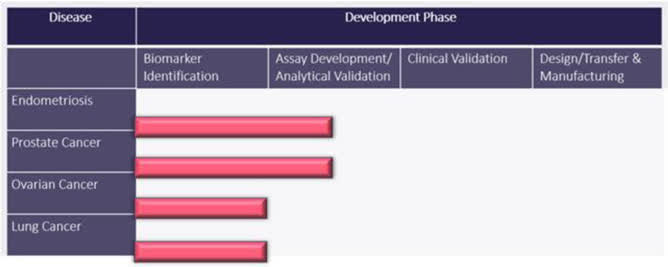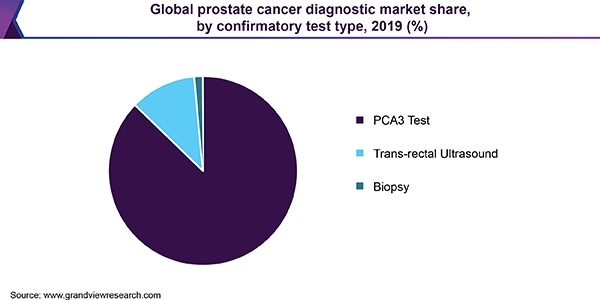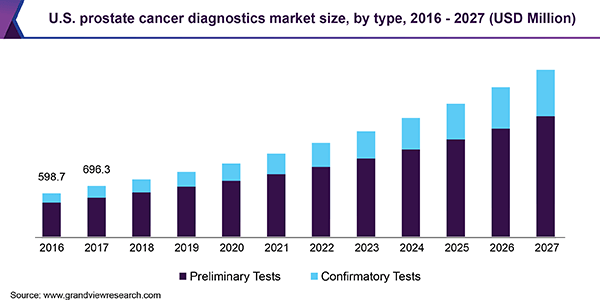Anchiy
What Is MDNA Life Sciences?
West Palm Beach, Florida-based MDNA Life Sciences Inc. (MDLS) was founded to develop a family of biomarker identification diagnostic tests for detection of cancers and other diseases.
Management is headed by Chief Executive Officer Christopher C. Mitton, who has been with the firm since January 2016 and was previously head of sales operations for Cancer Genetics and led the N. America commercial operations expansion for Ipsogen.
The company’s primary development pipeline is shown here:
Company Pipeline Status (SEC EDGAR)
MDNA has booked fair market value investment of $28.7 million as of June 30, 2022.
The company is still in development for its primary technologies, which have proceeded in trials in Europe.
The revenue generated so far has been related to COVID-19 diagnostic testing services and management expects such revenue “to taper off and ultimately cease by the end of the second quarter of 2022.”
MDNA’s Market & Competition
According to a 2020 market research report by Grand View Research, the global market for prostate cancer diagnostics was an estimated $2.8 billion in 2019 and is forecast to reach $7.6 billion by 2027.
This represents a forecast CAGR of 13.2% from 2020 to 2027.
The main drivers for this expected growth are an increasing prevalence of prostate cancer among an aging global population and a growing awareness of related symptoms.
There are three primary test types used for diagnosing prostate cancer, with their respective market shares shown in the chart below:
Global Prostate Cancer Market Share (Seeking Alpha)
Also, the chart below shows the historical and projected future growth trajectory of the U.S. prostate cancer diagnostics market size:
U.S. Prostate Cancer Market (Grand View Research)
MDNA is also developing biomarker tests for other markets, including endometriosis, ovarian cancer and lung cancer.
Major competitive or other industry participants include:
-
MDx Health
-
Myriad Genetics
-
Abbott Laboratories
-
F. Hoffman-La Roche AG
-
Siemens Healthineers AG
-
OPKO Health
-
Genomic Health
MDNA’s IPO Date & Details
The initial public offering date, or IPO, for MDNA has not yet been indicated by the company or its IPO underwriter.
(Warning: Compared to stocks with more history, IPOs typically have less information for investors to review and analyze. For this reason, investors should use caution when thinking about investing in an IPO, or immediately post-IPO. Also, investors should keep in mind that many IPOs are heavily marketed, past company performance is not a guarantee of future results and potential risks may be understated.)
MDLS intends to sell 2.0 million shares of common stock at a proposed midpoint price of $5.00 per share for gross proceeds of approximately $10.0 million, not including the sale of customary underwriter options.
No existing or potentially new shareholders have indicated an interest to purchase shares at the IPO price.
Assuming a successful IPO at the midpoint of the proposed price range, the company’s enterprise value at IPO (excluding underwriter options) would approximate $28.7 million.
The float to outstanding shares ratio (excluding underwriter options) will be approximately 26.94%. A figure under 10% is generally considered a “low float” stock which can be subject to significant price volatility.
Per the firm’s most recent regulatory filing, it plans to use the net proceeds as follows:
approximately $4.0 million to fund our research and development activities;
approximately $1 million to fund the regulatory review process for each of our products;
approximately $1.5 million to fund repayment of debt to vendors and management; and
the remainder for working capital and other general corporate purposes, including the additional costs associated with being a public company.
(Source – SEC)
Management’s presentation of the company roadshow is not available.
Regarding outstanding legal proceedings, management says the company is ‘currently not a party to any material legal proceedings.’
The sole listed bookrunner of the IPO is EF Hutton.
How To Invest In The Company’s Stock: 7 Steps
Investors can buy shares of the stock in the same way they may buy stocks of other publicly traded companies, or as part of the pre-IPO allocation.
Note: This report is not a recommendation to purchase stock or any other security. For investors who are interested in pursuing a potential investment after the IPO is complete, the following steps for buying stocks will be helpful.
Step 1: Understand The Company’s Financial History
Although there is not much public financial information available about the company, investors can look at the company’s financial history on their form S-1 or F-1 SEC filing (Source).
Step 2: Assess The Company’s Financial Reports
The primary financial statements available for publicly-traded companies include the income statement, balance sheet, and statement of cash flows. These financial statements can help investors learn about a company’s cash capitalization structure, cash flow trends and financial position.
The firm’s financials have produced uneven revenue, dropping gross profit, increasing operating losses and growing cash used in operations.
Step 3: Evaluate The Company’s Potential Compared To Your Investment Horizon
When investors evaluate potential stocks to buy, it’s important to consider their time horizon and risk tolerance before buying shares. For example, a swing-trader may be interested in short-term growth potential, whereas a long-term investor may prioritize strong financials ahead of short-term price movements.
Step 4: Select A Brokerage
Investors who do not already have a trading account will begin with the selection of a brokerage firm. The account types commonly used for trading stocks include a standard brokerage account or a retirement account like an IRA.
Investors who prefer advice for a fee can open a trading account with a full-service broker or an independent investment advisor and those who want to manage their portfolio for a reduced cost may choose a discount brokerage company.
Step 5: Choose An Investment Size And Strategy
Investors who have decided to buy shares of company stock should consider how many shares to purchase and what investment strategy to adopt for their new position. The investment strategy will guide an investors’ holding period and exit strategy.
Many investors choose to buy and hold stocks for lengthy periods. Examples of basic investing strategies include swing trading, short-term trading or investing over a long-term holding period.
For investors wishing to gain a pre-IPO allocation of shares at the IPO price, they would “indicate interest” with their broker in advance of the IPO. Indicating an interest is not a guarantee that the investor will receive an allocation of pre-IPO shares.
Step 6: Choose An Order Type
Investors have many choices for placing orders to purchase stocks, including market orders, limit orders and stop orders.
-
Market order: This is the most common type of order made by retail traders. A market order executes a trade immediately at the best available transaction price.
-
Limit order: When an investor places a buy limit order, they specify a maximum price to be paid for the shares.
-
Stop order: A buy-stop order is an order to buy at a specified price, known as the stop price, which will be higher than the current market price. In the case of buy-stop, the stop price will be lower than the current market price.
Step 7: Submit The Trade
After investors have funded their account with cash, they may decide an investment size and order type, then submit the trade to place an order. If the trade is a market order, it will be filled immediately at the best available market price.
However, if investors submit a limit order or stop order, the investor may have to wait until the stock reaches their target price or stop-loss price for the trade to be completed.
The Bottom Line
MDLS is seeking public capital market funding to continue its diagnostic test regulatory review processes and to pay down debt.
The market opportunity for various biomarker early stage testing products is large, but the firm faces significant competition from entrenched players as well as new would-be entrants.
The company hasn’t disclosed any major pharma or diagnostic firm collaborations and its investor syndicate does not include any well-known institutional investors.
EF Hutton is the sole underwriter and IPOs led by the firm over the last 12-month period have generated an average return of negative (68.9%) since their IPO. This is a bottom-tier performance for all major underwriters during the period.
The primary risk to the company’s outlook is the potentially long regulatory process leading to an approval decision for each test.
As for valuation, MDLS management is asking investors to pay an Enterprise Value of $28.7 million for the IPO, well below the typical range for a life science company at IPO.
In general, the diagnostic test market is a difficult one to make significant returns for investors.
That, coupled with the firm’s thin capitalization, make MDLS’ IPO a long shot.
I’m on Hold for the MDLS IPO at this time.


Be the first to comment